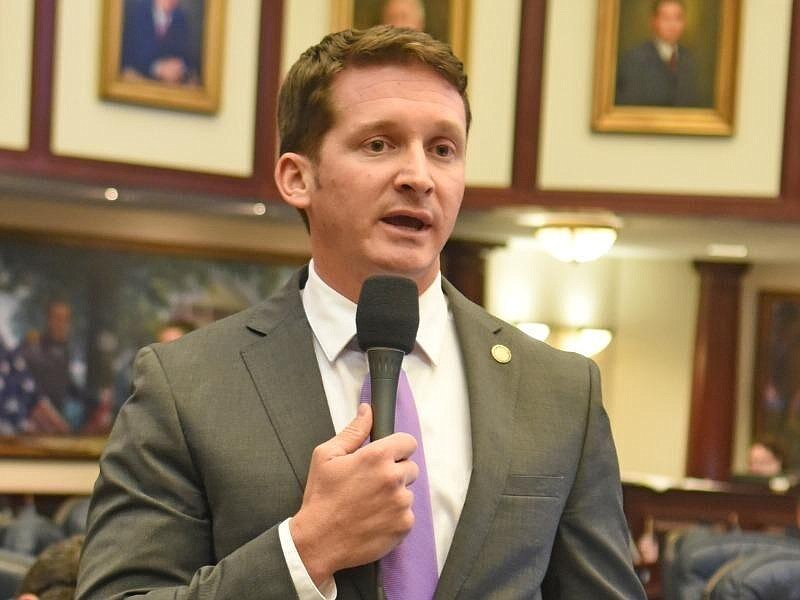- January 16, 2025
-
-
Loading

Loading

While slightly above the national mark, Florida’s unemployment rate inched down to 4.9 percent in September as workers appear to have become more selective about jobs.
The state Department of Economic Opportunity on Friday, Oct. 23, estimated the state’s seasonally adjusted jobless rate was down from 5.0 percent in August. The rate was down 2.3 percentage points from September 2020, when the state was completing its reopening after COVID-19 pandemic closings that began in March 2020.
The new rate, which measured employment in mid-September, represented 517,000 Floridians out of work from a labor force of 10.59 million. The number of unemployed people was down 13,000 while the size of the labor force had grown by 50,000.
While the state has ramped up efforts since May to push people back into the labor force, it has also seen the number of people leaving jobs, over issues including pay and benefits, jump from 193,000 in September 2020 to 264,000 in the latest report.
“Eventually, (workers) are going to have to decide, do they want to go back to work or are they just going to leave the workforce entirely?” Department of Economic Opportunity Secretary Dane Eagle said in a conference call with reporters. “So, the message to employers is yes, look, if they're having trouble hiring, they have to get creative. They have to make decisions about what do they want to do to market themselves to be attractive to those in the job market. And that's free market economics. And that's what we support here in Florida.”
Adrienne Johnston, the department’s chief economist, said people leaving jobs for other opportunities is a sign they are confident they can find better work.
“While we are seeing an increase in people quitting since last year, what is really interesting about that is that they are quitting but they are still saying they are looking for work,” Johnston said. “Traditionally, this is considered to be an optimistic sign. That means people are quitting because they are confident that they can find a job somewhere else.”
The national unemployment rate in September was 4.8 percent, down from 5.2 percent in August. In all, 27 states showed lower rates in September than August. Only Massachusetts, where the rate went up 0.2 percentage points, posted an increase.
In a video release on Friday, Gov. Ron DeSantis highlighted the state’s non-agricultural employment, where the number of jobs grew by 84,500 month-to-month.
“That's a big chunk of the national numbers that were reported in September,” DeSantis said in the video. “We’re 6½ percent of the population, and then the jobs added (a) much, much greater percentage. So, we want to continue to work hard to provide people opportunity, create an environment that people want to work and live and thrive for themselves and their families.”
On Thursday, DeSantis called for a special legislative session next month to erect roadblocks against COVID-19 vaccination mandates being advanced by the White House for millions of workers across the country. On Wednesday, he called for the use of Florida ports as an alternative to Southern California ports, which have had bottlenecks of cargo ships.
Since the pandemic pushed nearly 1.27 million Floridians out of work between February and April 2020, the state has regained just over 1 million jobs.
Eagle cautioned that it will still take some time for the effort started in May to get the unemployment rate back to pre-pandemic levels.
The state in June withdrew Florida early from two federal assistance programs --- the Federal Pandemic Unemployment Compensation and Mixed Earners Unemployment Compensation programs --- and reinstated a “work search” requirement for people seeking unemployment benefits.
Other federal unemployment programs that were part of pandemic recovery efforts ended Sept. 6.
"It's going to take some time for the workforce to line back up with the available jobs," Eagle said. "But when you have federal policies that allow people to be unemployed for well over a year, and we've had nearly 500,000 in Florida collecting benefits for over a year, it does provide a disadvantage to those individuals to have to reconnect to the workforce. And that does take time."
Florida since mid-May has seen little change in the weekly numbers of new unemployment claims, averaging 7,824 first-time applications per week, according to the U.S. Department of Labor.
The first-time jobless claims average is similar to pre-pandemic levels.
Across Florida, the highest rates of unemployment remained inland in September, with the Sebring metropolitan statistical area at 5.7 percent, down from 6.5 percent in August. The Villages metropolitan statistical area was at 5.6 percent, down from 6.4 percent the prior month.
The Miami-Fort Lauderdale-West Palm Beach area posted a 4.9 percent jobless mark, down from 5.6 percent in August and 9.6 percent in September 2020.
The lowest unemployment rates last month were found in the Crestview-Fort Walton Beach-Destin area, at 3.3 percent, the Gainesville area at 3.5 percent and the Panama City and Naples-Immokalee-Marco Island areas at 3.6 percent.
The Crestview-Fort Walton Beach-Destin area was at 3.8 percent in August. The Panama City area was at 4.1 percent in August, while the Gainesville and Naples regions were at 4.2 percent.
The Jacksonville area went from 4.3 percent in August to 3.7 percent in September.
The Pensacola area dropped from 4.5 percent to 3.9 percent.
The Tampa-St. Petersburg-Clearwater area landed at 3.9 percent after being at 4.5 percent in August.
The Orlando-Kissimmee-Sanford market, which was at 8.7 percent in September 2020, was at 4.5 percent last month. The region was at 5.0 percent in August.
The metropolitan statistical area rates are not seasonally adjusted, unlike the statewide rate.